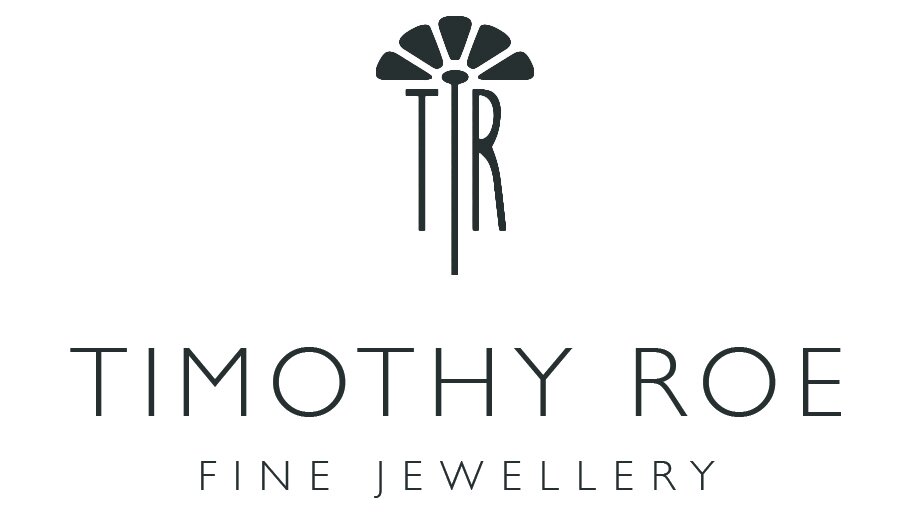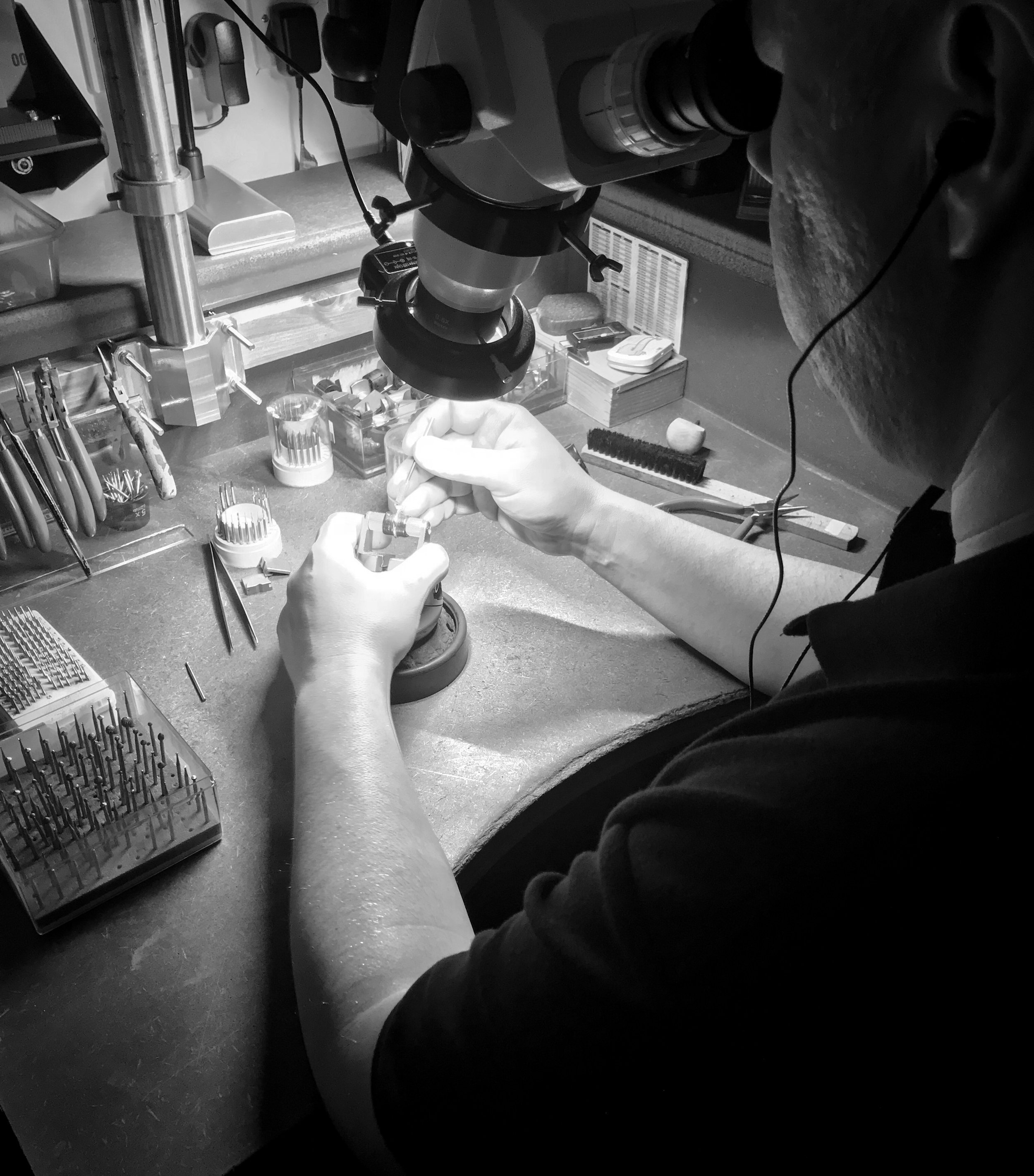How to Clean Jewellery – Our Expert Maintenance Guide
Jewellery is made to be worn, loved, and enjoyed – but like anything precious, it benefits from care and attention to keep it looking its best.
Diamond Solitaire Ring With Shoulders in Platinum
Over time, even the finest jewellery pieces will show signs of wear. Diamonds attract grease, silver tarnishes, white gold needs rhodium plating to restore its bright finish, and gemstones like emeralds or opals can be sensitive to light, moisture, or chemicals. Every material has its own needs and care instructions.
Don’t let this put you off. Every piece of jewellery, no matter the stone or setting, will require some maintenance to preserve its beauty. The key is understanding how to care for your jewellery and choosing pieces that suit your lifestyle.
Precious metals and gems have to be soft enough to craft, cut, shape, and polish so it is only natural they will also be susceptible to scratches and other minor accidents when worn. By learning about the maintenance and cleaning procedures for your jewellery will help to prolong its life and keep it looking as stunning as the day you bought it.
We believe jewellery should last a lifetime and more. That’s why we’ve created this practical guide to help you protect your pieces and ensure they remain as stunning as the day they left our workshop. From daily tips to long-term upkeep, here are our expert recommendations to keep your jewellery looking exceptional for years to come.
1. Clean Your Jewellery Regularly
Many people ask us how to clean their jewellery at home safely and without damaging it. The good news is, with a little routine care, you can keep your pieces looking bright and beautiful between professional cleans.
Start with a simple daily wipe using a soft, lint-free cloth. This helps remove everyday build-up like natural oils, body lotions, and hand creams, which can dull the appearance of stones and metals over time. For a light clean, there are excellent at-home cleaning products available, such as dips, pens, and polishing cloths designed specifically for jewellery.
When your jewellery needs a more thorough refresh, a deep clean can be done at home – carefully. We recommend soaking diamond jewellery only in lukewarm water with a drop of mild dish soap, then gently brushing with a soft baby toothbrush. Be cautious with other gemstones, as many should not be submerged in water, and take extra care with claw settings.
Different materials and gemstones require specific care. If in doubt, please ask us – that is what we are here for.
How to Clean Gold Jewellery
To clean gold jewellery safely at home, fill a bowl with lukewarm water (be careful as extreme temperatures can damage your jewellery) and add a few drops of mild detergent to create a soapy solution. Soak your jewellery for around ten minutes to loosen any dirt. Then, using a very soft-bristled brush, gently clean each piece – taking care around delicate details. Avoid scrubbing firmly, as gold is naturally soft and can be easily scratched. Rinse thoroughly in a second bowl of clean lukewarm water to remove any soap residue. Finally, dry and polish with a soft, lint-free cloth to restore the shine. We recommend that you do not attempt to clean your gold jewellery using any form of chemical or ultrasonic cleaner; for deep cleans, see a professional jeweller.
How to Clean Silver Jewellery
For silver jewellery that isn’t rhodium plated or hasn’t been worn regularly, a specialist silver cloth will help remove tarnish and restore its shine. Tarnish is a natural reaction between silver and the air, often showing as a dull layer or small white ‘milk spots’ that can be buffed out. Do not use any chemicals or ultrasonic cleaners; for a deeper clean we recommend you take your jewellery to a professional.
2. Book in Professional Cleaning
For deeper cleans, we always recommend seeing a professional to ensure the cleaning is carried out safely and effectively.
Daily wear can impact your jewellery from hand creams, to sun lotion, and even soil from gardening can find their way into the crevices of your rings and stones, dulling their shine over time. These stubborn build-ups are tricky to clean without professional tools.
If your jewellery has lost its sparkle, why not pop in for a same-day clean and polish? It’s the perfect way to boost your shimmer and restore the sparkle. We clean the stones, check the claws and setting and polish the metal until it looks like new again.
We offer three levels of professional cleaning:
Level 1 (20 minutes): Stone check, ultrasonic clean, and steam clean.
Level 2 (60 minutes): Includes Level 1 services plus a full metal polish.
Level 3 (2 hours): Includes Level 2 services plus rhodium plating for silver or white gold.
(Note: Some jewellery requires additional care. Certain gemstones cannot withstand ultrasonic cleaning. We thoroughly inspect all items beforehand and will notify you of any potential issues.)
Is Professional Jewellery Cleaning Worth It?
Yes, absolutely. Professional jewellery cleaning is well worth it if you want your pieces to look their best and last for many years to come. Expert cleaning reaches where home methods can’t, helping to preserve brilliance, maintain settings, and ensure your jewellery continues to shine beautifully for years to come. Deeper cleans need to be done by experienced professionals or you risk damaging your precious pieces.
How Often Should You Have Your Jewellery Professionally Cleaned?
We recommend having your jewellery professionally cleaned every 6 to 12 months. Pieces worn daily or exposed to lotions, perfumes, or manual work may need more frequent care. Regular, professional cleaning helps to maintain the beauty of your jewellery and checks for wear or damage, protecting it before any further damage occurs.
3. Inspect Your Jewellery For Wear or Damage
Regular checks are essential to keep your jewellery secure and in its best condition. With time and wear, any piece of jewellery can show signs of stress. Spotting issues early can prevent expensive repairs or, worse, a lost stone.
Check Your Claws
Claws on rings, pendants, and earrings can wear down or lift over time. If you notice fluff caught in the setting or feel sharp edges, it may be a sign they need attention. We recommend having claws inspected regularly, and re-tipped or re-clawed every five years (or sooner if you lead a hands-on lifestyle).
Monitor Clasps and Hinges
Clasps, hinges, and safety chains on bracelets, bangles, and earrings are subject to constant movement. Over time, this can lead to loosening or breakage. Give them a gentle test when cleaning and before wearing to ensure everything is secure. Make sure to store bracelets and necklaces fastened to prevent tangling.
Restring Pearls Annually
Pearls are delicate and should be handled with care. If worn often, they should be restrung once a year to prevent the silk thread from weakening or stretching. Always store pearl strands flat, and check for any fraying near the clasp.
When in doubt, bring your jewellery to us – we’ll be happy to inspect it professionally.
4. Store Your Jewellery Properly
Storage really does matter. Proper storage minimises exposure to chemicals, light, scratches, and dust, as well as preventing chains from tangling or rings from knocking against one another.
Store each piece in a soft cloth bag, jewellery box, or individual compartment to prevent scratches.
Keep softer gemstones away from harder ones like diamonds to avoid damage.
Use high-quality, cushioned jewellery boxes (e.g. Wolf brand with anti-tarnish linings like LusterLoc) so you don’t have to keep polishing silver items.
Lay chains and delicate bracelets flat to avoid tangling.
5. Avoid Harsh Chemicals
Make sure to take your jewellery off before using cleaning products, swimming in chlorinated pools, or applying lotions, perfumes, or hairsprays, as these can damage metals, solders, and gemstones. Also, do not use harsh chemicals when cleaning your jewellery, as this can also lead to damage.
6. Handle with Care and Remove During Certain Activities
Our lifestyles tend to be busier than we think and often, we do not consciously notice how much we use our hands and how much we expose our jewellery to knocks, bumps, and scrapes. There is only so much abrasion and impact our jewellery can take before it breaks or a stone cleaves.
Take off rings and bracelets during activities like gardening, heavy lifting, or exercising to prevent physical damage from knocks and abrasions or loss.
Avoid pulling aggressively on delicate chains or clasps and remove jewellery before sleeping to avoid damage, stretching or tangling.
Avoid wearing jewellery whilst cooking or cleaning, as dirt, grease and food can become lodged in intricate settings, especially in rings. (We once had someone visit us worried that their stone had discoloured – it turned out that it was dried old mashed potato stuck under the stone that had gone mouldy!)
7. Protect from Extreme Conditions
Keep jewellery away from extreme heat or sudden temperature changes like saunas and snowy pistes, which can damage gemstones that are sensitive. High heat exposure can change the colour of stones and mother-of-pearl. Avoid prolonged exposure to direct sunlight, which can fade certain gemstones like amethyst, pearls, topaz, opals and aquamarines.
Speak to Our Expert Team About Professional Cleaning or Jewellery Repairs
By following these simple care tips, you can keep your precious jewellery looking as beautiful as the day you got it. Regular cleaning, careful storage, and routine inspections all help to protect your pieces and prolong their life.
If you’re ever unsure, we’re here to help. For advice, same-day cleaning, or expert repairs, speak to our team – we’ll ensure your jewellery stays in stunning condition for years to come.











